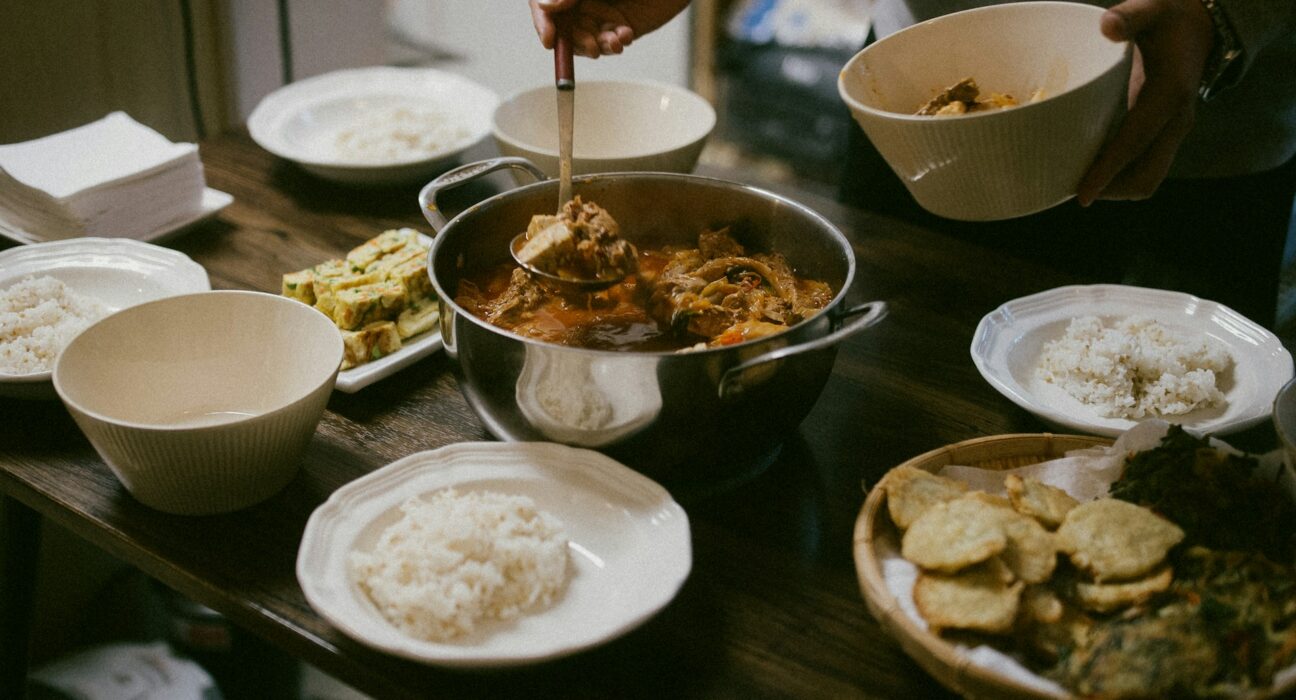Motherhood comes with countless demands on your time and energy. Between work, school pickups, and the endless cycle of laundry, the last thing you want is to spend hours in the kitchen creating elaborate meals. Yet there’s something deeply satisfying about serving your family a delicious, home-cooked dinner that looks thoughtfully prepared.
The solution lies in mastering the art of minimalist cooking through strategic meal planning. These easy recipes prove that simplicity doesn’t mean sacrificing flavor or presentation. With just one pot and a handful of quality ingredients, you can create weeknight dinners that nourish your family while maintaining your sanity.
The beauty of single-vessel cooking extends far beyond convenience. When everything cooks together, flavors meld beautifully, creating depth that would otherwise require multiple techniques. Less cleanup means more time with your loved ones, and the streamlined approach makes it easier to maintain consistency in your meal routine.
The Science Behind Simplified Cooking
Why Less Really Is More
Complex meals often mask the natural flavors of individual ingredients. When you embrace minimalist cooking, each component has space to shine. A perfectly seasoned chicken thigh, tender vegetables, and aromatic herbs create harmony without requiring extensive preparation.
The key lies in understanding how ingredients work together. Proteins release natural juices that become the foundation for your sauce. Vegetables contribute sweetness and texture. Grains or pasta absorb these combined flavors, creating a cohesive dish that tastes like it took hours to develop.
Strategic Ingredient Selection
Success in simplified cooking starts with choosing versatile, high-quality ingredients. Root vegetables like carrots, potatoes, and onions provide natural sweetness and substance. Pantry staples such as canned tomatoes, dried herbs, and good olive oil become your flavor foundation.
Proteins that benefit from slow, gentle cooking work best in these preparations. Chicken thighs, ground turkey, and firm fish fillets all deliver excellent results without requiring precise timing or temperature control.
Essential Equipment for Streamlined Success
Choosing Your Perfect Vessel
Not all pots are created equal when it comes to these easy recipes. A heavy-bottomed Dutch oven distributes heat evenly and retains temperature well, making it ideal for both stovetop and oven cooking. Cast iron skillets develop beautiful browning and can transition seamlessly from burner to table.
Size matters more than you might think. A pot that’s too small will overcrowd ingredients, leading to steaming rather than proper cooking. Too large, and liquids may evaporate too quickly, potentially burning your carefully planned meal.
Supporting Tools That Make a Difference
A sharp knife transforms prep work from a chore to a quick task. Consistent cuts ensure even cooking, which is crucial when everything needs to finish simultaneously. A sturdy cutting board provides a stable workspace and protects your countertops.
Quality measuring tools eliminate guesswork and help you develop confidence in your seasoning. Once you understand the ratios that work, you can begin improvising based on what’s available in your pantry.
Mastering Flavor Without Complexity
Building Layers Simply
Professional chefs understand that great flavor develops in stages, but you don’t need culinary school to apply these principles. Start by browning your protein to develop rich, caramelized notes. Those golden bits stuck to the bottom of your pan become the foundation for incredible depth.
Aromatics like onions, garlic, and fresh herbs release their essential oils when heated, creating a fragrant base that permeates everything else in the pot. Adding these ingredients at the right moment ensures they contribute maximum impact without becoming bitter or losing their potency.
Seasoning Strategies That Work
Salt enhances natural flavors rather than masking them, but timing matters. Season proteins before cooking to help them develop better color and taste. Add salt to vegetables early in the cooking process to help them release moisture and concentrate their flavors.
Acid brightens finished dishes and helps balance richer elements. A splash of white wine, a squeeze of lemon juice, or a spoonful of vinegar added near the end of cooking can transform a good dish into something memorable.
Quick Preparation Techniques
Efficient Mise en Place
Professional kitchens rely on mise en place—having everything prepared and organized before cooking begins. This principle becomes even more valuable when juggling family responsibilities. Spend a few minutes washing, chopping, and measuring before you turn on any heat.
Prep vegetables in order of cooking time. Items that take longer, like carrots and potatoes, should be cut smaller than quick-cooking ingredients like zucchini or spinach. This ensures everything finishes cooking simultaneously.
Time-Saving Shortcuts
Frozen vegetables often work beautifully in these weeknight dinners, and they’re typically frozen at peak freshness. There’s no shame in using pre-washed salad greens, canned beans, or rotisserie chicken when time is short.
Batch preparation on less busy days sets you up for success throughout the week. Washing and chopping vegetables, portioning proteins, or mixing spice blends during quieter moments makes weeknight cooking almost effortless.
Versatile Base Recipes You Can Customize
Mediterranean-Inspired Foundations
Start with olive oil, onions, and garlic as your base. Add canned tomatoes, herbs like oregano and basil, and your choice of protein. This foundation works beautifully with chicken, white fish, or even cannellini beans for a vegetarian option.
Rice, pasta, or crusty bread all complement these flavors well. Add vegetables based on what’s seasonal or what needs to be used from your refrigerator. Zucchini, bell peppers, and spinach all work wonderfully.
Comfort Food Classics
Butter, onions, and fresh thyme create a comforting base that pairs well with heartier proteins and vegetables. Add chicken or vegetable broth for liquid, then incorporate potatoes, carrots, and celery for substance.
This foundation adapts well to different proteins and can easily accommodate dietary restrictions. Ground turkey, diced chicken, or even lentils work beautifully with these warming flavors.
Presentation Tips for Polished Results
Plating Like a Pro
Even simple meals benefit from thoughtful presentation. Serve directly from your cooking vessel for a rustic, family-style approach that feels intentional rather than lazy. A sprinkle of fresh herbs or a drizzle of good olive oil adds visual appeal without extra work.
Color contrast makes food more appealing and appetizing. If your dish is predominantly brown or beige, consider stirring in some fresh spinach at the end or serving it with a simple green salad.
Creating Atmosphere
Dimmed lighting and cloth napkins transform even the simplest meal into something special. Setting the table while your dinner cooks takes just a few minutes but signals to your family that this meal matters.
Background music and phones put away help create a connection around the dinner table. These small touches cost nothing but contribute significantly to the overall dining experience.
Making It Work for Your Family
Creating a sustainable meal routine requires understanding your family’s preferences and your realistic capabilities. Start with one or two reliable recipes and master them completely before expanding your repertoire. Confidence in the kitchen develops through repetition and success.
Keep a running list of what works and what doesn’t. Note which vegetables your children eat, which proteins cook most reliably, and which flavors everyone enjoys. This information becomes invaluable for meal planning and grocery shopping.
Remember that perfection isn’t the goal—consistency is. A simple, nutritious meal served with love beats takeout every time, even if it’s not Instagram-worthy. Your family will remember the warmth and care you put into feeding them, not whether you used the fanciest ingredients or most complex techniques.







